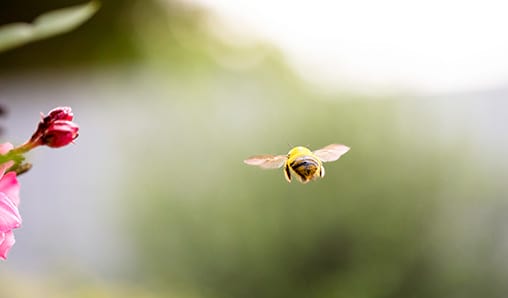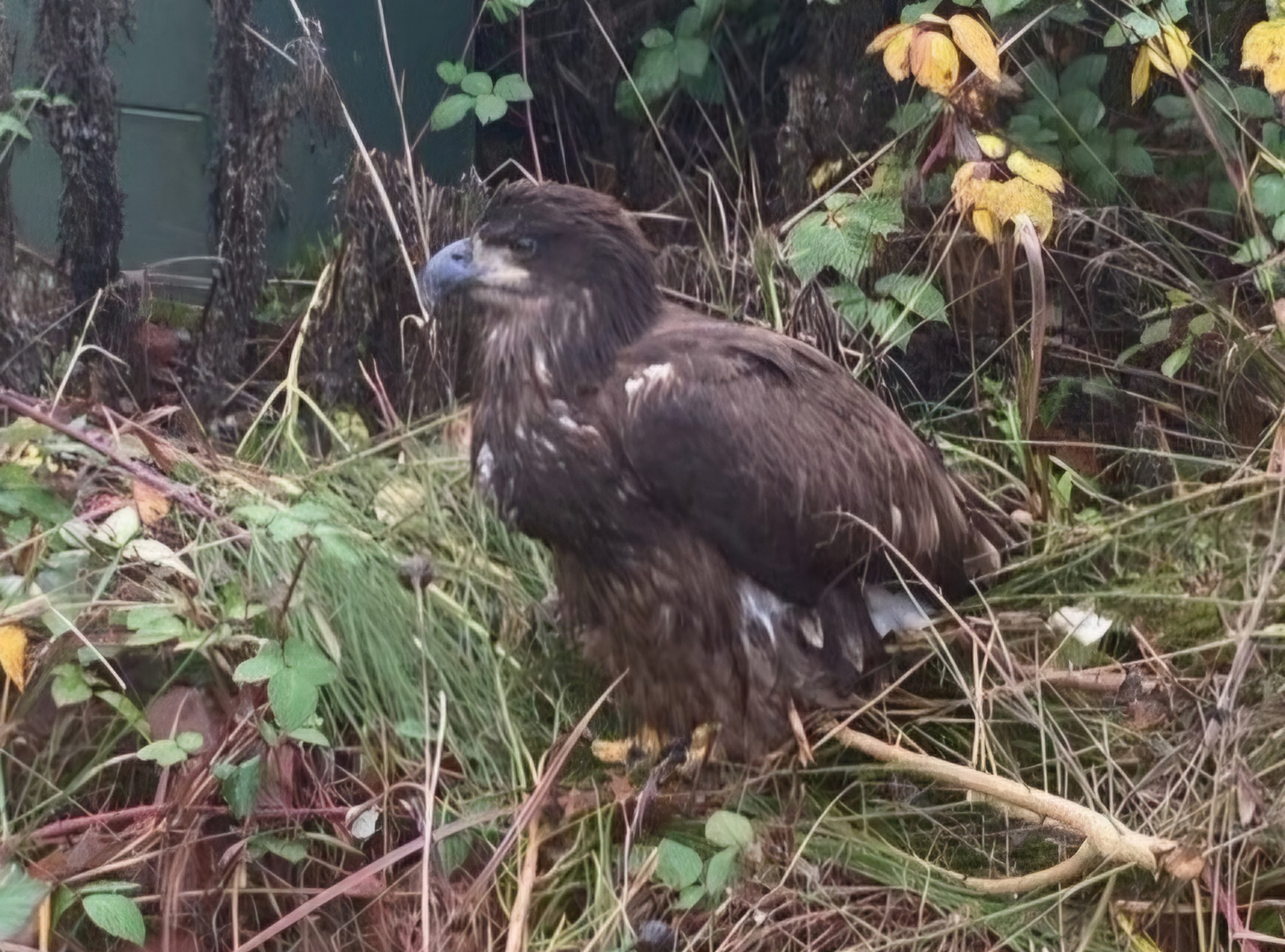
Most of them nest in the dirt, but their best work takes place above ground as they flit from plant to plant, feeding on nectar and loading their legs with pollen. These tiny superheroes, some sporting brilliant green caps and capes, are wild bees, who, along with other insects, pollinate the vast majority of the world’s flowering plants.
They’re also the subject of a recent research project conducted by scientists from Oregon State University who wanted to learn if bee populations are affected by extensive removal of timber residue/biomass during and after harvesting. The two-year project took place on a portion of our timberlands near Springfield, Oregon.
A BOON FOR BEES
When this first-of-its kind study started in 2014, little was known about the potential impacts of biomass removal on bees, especially the native ground dwellers who enjoy post-harvest, early successional forest conditions for foraging and nesting.
At the end of the project, OSU researchers made a happy discovery — the bees were abundant and thriving even in areas where all the biomass was removed.
In his report, lead scientist Jim Rivers wrote, “Our study indicates that early successional managed conifer forests that have experienced removal of harvest residue can harbor a surprising diversity of wild bees, which have important contributions to the broader ecological community through the pollination services they provide.”
STUDY SITE ALL SET UP
The unique setting that made the research possible is actually part of a larger, ongoing project started in 2011 and initially supported by the Northwest Advanced Renewables Alliance, a group interested in using harvest residue as a basis for jet biofuel.
Our Western Timberlands business supplied the study site, setting aside 28 acres that were divvied into subplots with varying levels of harvest intensity. Those levels ranged from removing only boles (tree stems) with no soil compaction from equipment, to removing everything — boles, branches, crowns, needles and duff — along with soil compaction. The collaborative effort includes Weyerhaeuser scientists and academic and government researchers.
“For Weyerhaeuser purposes, we wanted to learn if soil productivity and tree growth are affected by removing organic material we would normally leave after harvesting.” says Scott Holub, a silvicultural scientist for Western Timberlands. “We also wanted to look at the effects of removal on the broader ecosystem, such as wildlife. OSU’s bee study fit that bill.”
Although bees were found to thrive in all the treatments, “They definitely liked the areas that were cleared and scraped down to the bare soil,” Scott says. “Under normal harvesting practices we wouldn’t remove that much material, but the results are a great indication that what we do operationally doesn’t harm bees.”
THE BUZZ ON THE BEES
-
Over the course of two summers, OSU scientists collected more than 7,500 bee specimens from 92 distinct species, representing five of the seven bee families. The majority of these bees were ground-nesters.
-
They used unscented blue vane traps to target foraging bees and emergent traps to capture bees as they emerged from nest chambers in the soil.
-
The sweat bee family (so named because they like salt from human sweat!) made up 60 percent of all captured specimens.
-
The most abundant genus was metallic green bees at 33.6 percent; followed by long-horned bees at 16.5 percent; sweat bees at 16 percent; and bumble bees at 13.6 percent. Non-native honey bees comprised 7.8 percent.


